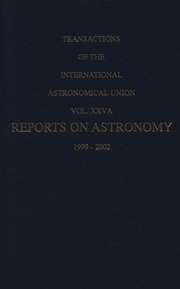No CrossRef data available.
Article contents
29. Commission des Spectres Stellaires
Published online by Cambridge University Press: 25 April 2016
Extract
Two-thirds of the members of the Commission have replied to the request of the chairman for an expression of their opinion. Most of them are in general well satisfied with the existing system of classification and nomenclature. Lindblad reports on successful work upon the determination of absolute magnitudes of faint stars, in many ways. Adams writes: “I might suggest that attention be called in the report to the fact that the ultra-violet spectra, even of stars like β Orionis, show large numbers of lines. As you probably remember, the spectrum of Sirius resembles, at first sight, the solar spectrum. If all observatories had the facilities for getting spectra in the far ultra-violet, this region would probably furnish the best criteria for spectral type.” Merrill suggests: “The nomenclature which, upon the basis of atomic transition, assigns the adjective ‘nebular’ to lines which may not occur in nebulae, and ‘ auroral ‘ to lines which may not occur in the aurora, is surely not an ideal one.
- Type
- Part I Reports and Recommendations Presented to the General Assembly by the Executive Committee and the Commissions of the Union
- Information
- Copyright
- Copyright © International Astronomical Union 1976 1939


